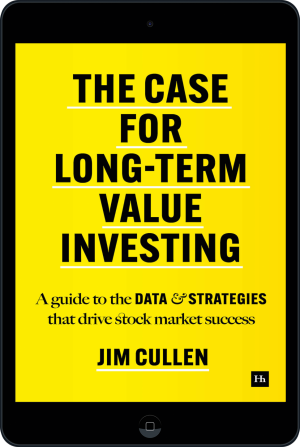Book Review: The Case for Long-Term Value Investing

Value investing: the art of buying low and selling lower, or so the old joke goes. But research shows that value investing consistently outperforms the market over the long term.
Value investing focuses on buying shares, which are often ‘unloved’, at a price below their so-called intrinsic value. In theory, it’s like buying a tenner for the price of a fiver. The idea is that the stock market will eventually realise the true value of a company and its shares will rise in price to reflect that.
Growth investing, which has been very popular in the past few years, is the opposite. Here, investors pile their money into fast-growing companies which they think could be worth much more in years to come, if they continue to grow at a rapid pace. Technology stocks in the dotcom bubble and FANG stocks following the pandemic, along with cannabis and blockchain shares in 2018 are examples of investors ‘going wild’ for growth, or so-called, momentum stocks.
One problem with value investing is that it can be hard work. It’s easy just to follow the crowd and buy the latest momentum ‘stonk’ without any due thought process. In contrast, you really have to do your homework when finding value shares, by going through lists of out-of-favour stocks and trying to calculate their intrinsic value. But, as argued by Jim Cullen in this new book, value investing has always worked, and it will continue to work.
Cullen is a finance veteran, having almost 60 years of industry experience. He started his career in 1964 with Merrill Lynch after four years as a Navy officer. In 1984 he founded Schafer Cullen Capital Management, where he is chairman and chief executive. Based in New York, the advisory firm currently manages around $20bn in assets.
Good value

In The Case for Long-Term Value Investing, Cullen teaches readers how to successfully invest in the stock market by using a value discipline. Through seven sections, he presents a series of concise introductions to key topics, to give investors a feel for what value investing is all about.
The first section looks at stock-market history over the past 100 years, with the intention of demonstrating how volatile markets can be over time. This sets the scene for showing how value investing can give investors the discipline they need to deal with the challenges and be successful over the long term.
In section two Cullen sets out the value investment strategy. His writings are mainly based on the principles of the ‘father of value investing’, Benjamin Graham, and his advice to be a long-term investor. The focus is on the three value fundamentals of price/earnings (P/E), price/book (P/B) and dividend yield. At the end of his 60-year-long career, Graham fully believed that his approach would consistently outperform all others.
Being disciplined was a crucial point for Graham, and in that respect, he focused on price. So, to avoid overpaying for future growth, the book suggests that investors should use a stock screen to only look for companies that are ranked in the bottom 20% of their index in terms of P/E ratios, P/B value or in the top 20% in terms of dividend yield.
The second key point is to invest for the long term. The fundamental point here is that while markets can be volatile in the short term, driven by greed and fear, in the long term, share performance will be driven more by fundamentals and earnings. Looking at the data on all three value metrics, Cullen argues that they all outperform the market overall over time, except when one-off ‘bubbles’ occur.
The next few sections look at putting the value strategy in place. The first kicks off with a warning to avoid market timing, an approach which sees investors come in and out of the market to try to improve performance or switch to investing in cash. Cullen’s advice is that the best time to invest is when you have the money, and to completely forget about market timing.
Next up is the ‘meat’ of the book where Cullen explains how to pick stocks. He starts off with the research process, advising to screen stocks on their valuation multiples in order to come up with the best ideas. Quantitative measures are not enough in themselves, however. The next step is to look for a stock with a good ‘story’, that will eventually result in a higher share price. He also suggests having 30-35 stocks in a portfolio, for adequate diversification, with no more than 15% allocated to any one industry sector. Section five then goes on to look at how the value discipline can be applied within strategies across different sectors of the investment universe, including high dividend value, small-cap value and ESG investing.
In section six, the author focuses on increasing understanding of the wider playing field. He reviews the nature of the stock market and phenomena such bear markets, recessions, speculative bubbles, consumer confidence and interest rates. The goal is for investors to recognise the challenges that arise from time to time, to understand them and not to overreact. The final section is about how to get started, providing a range of additional advice for new investors. Summarising his ideology, Cullen ends the book with the quote: “The key to building wealth is get started, make steady contributions, be disciplined as to price, and stay the course.”
Priceless information
With more than half a century of industry experience, Jim Cullen’s investment advice is worth reading. While there are hundreds of books about value investing on the market, his book stands out by being very easy to read; full of concise explanations of financial concepts and real-life examples; and with plenty of practical advice on how to build a value portfolio. What’s more, it can also help investors to avoid the temptation to invest in the latest popular ‘meme’ stocks and potentially avoid huge losses.
Comments (0)